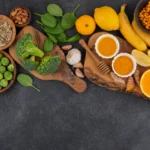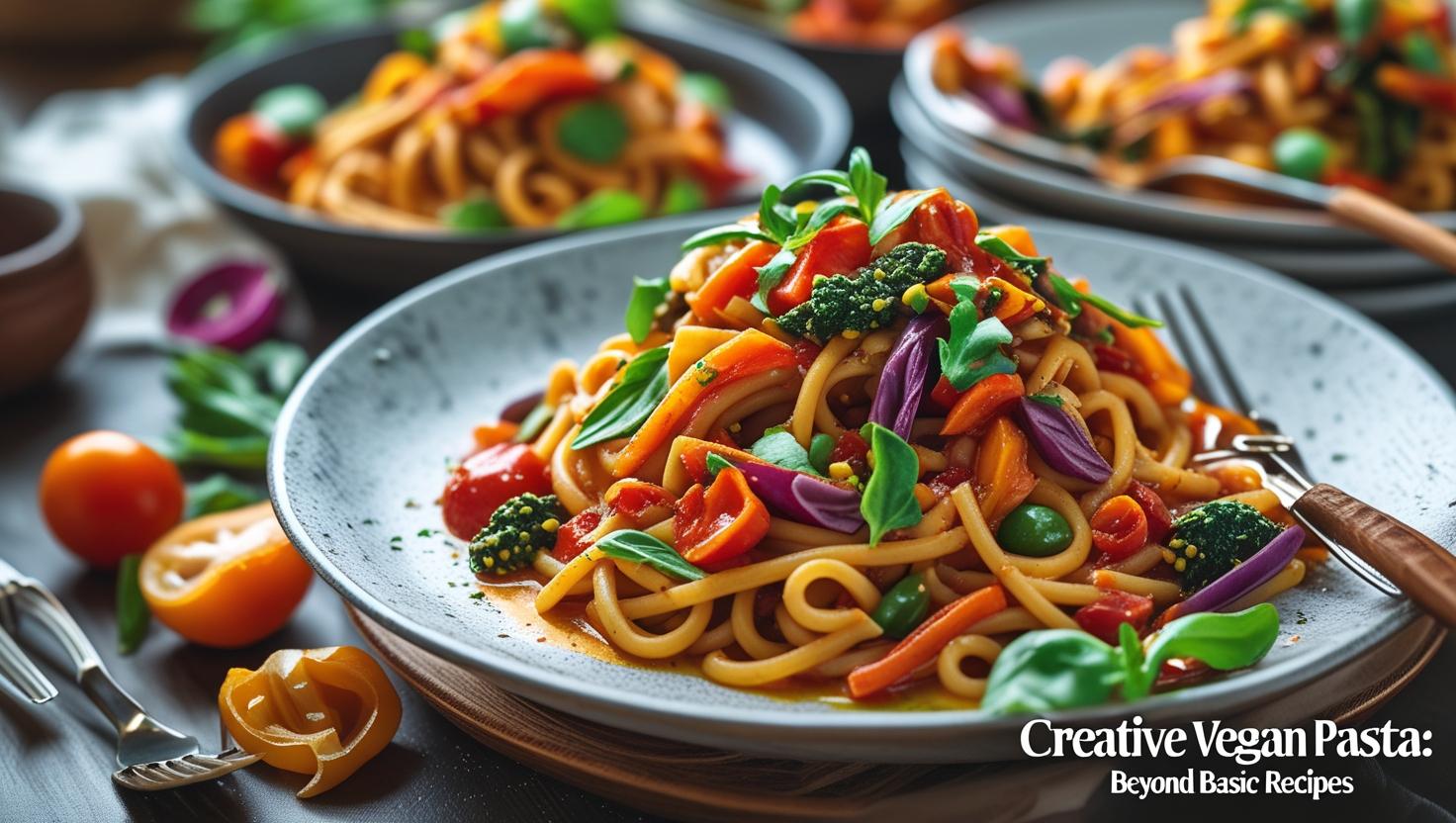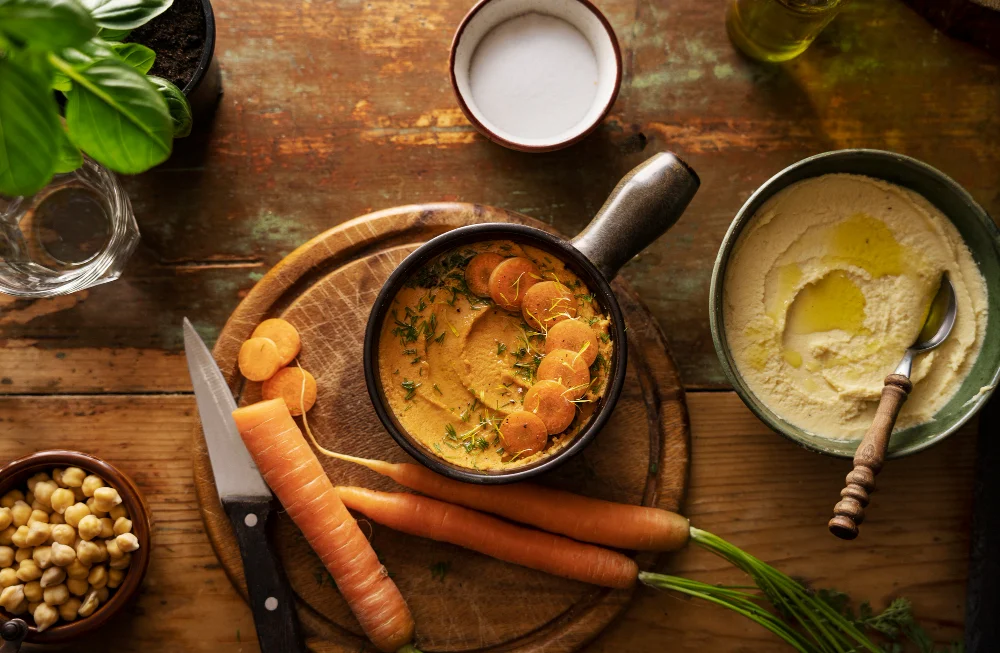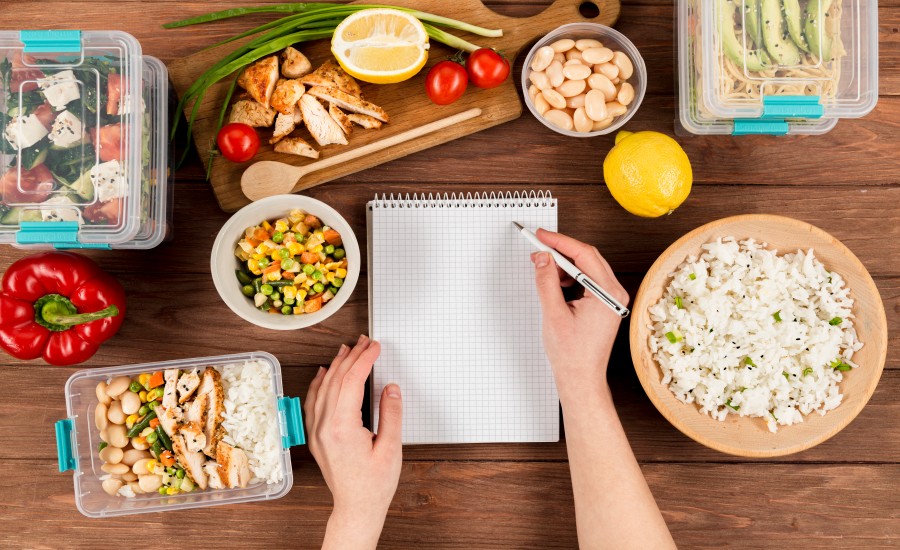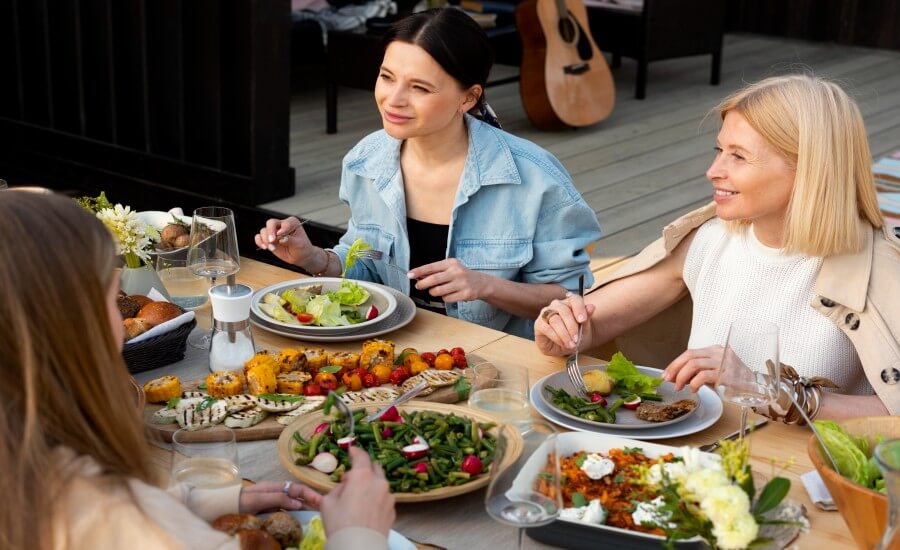Pasta is a universally beloved comfort food, cherished for its versatility and satisfying nature. Thankfully, its transition to a vegan lifestyle is often seamless, as most dried pasta is inherently plant-based. However, vegan pasta dishes frequently default to simple tomato or oil-and-garlic sauces. It’s time to look beyond! This guide explores the exciting world of creative vegan pasta recipes beyond the basics, showcasing innovative sauces, ingredient combinations, and techniques that deliver exceptional flavour and satisfaction. We’ll delve into nutritional strategies for balanced bowls, ethical considerations in sourcing and creation, the science and sustainability behind plant-based pasta meals, and practical recipes adaptable for kitchens everywhere, including harnessing the vibrant produce and spices of India, even here in Siyol, Rajasthan.
Elevate Dinner Time: Creative Vegan Pasta Recipes Guide
LENS 1: Nutritional Analysis (Elevated & Balanced Bowls)

Creative vegan pasta isn’t just about new flavours; it’s an opportunity to build truly well-rounded, nourishing meals that move beyond simple carbohydrates.
- Protein Power-Up: Elevate pasta from a carb-heavy dish to a balanced meal by incorporating plant protein sources:
- Legumes in Sauce: Lentils, chickpeas (chana), or mashed beans make hearty, protein-rich bolognese or ragu-style sauces.
- Blended Beans/Tofu: White beans or silken tofu blended into sauces add creaminess and protein.
- Nuts & Seeds: Blended into sauces (cashew cream, sunflower seed cream) or sprinkled on top (hemp seeds, toasted pumpkin seeds).
- Tofu/Tempeh Crumbles: Sautéed and seasoned crumbles added to sauces mimic mince.
- Legume Pasta: Using pasta made from lentils, chickpeas, or peas significantly boosts protein content.
- Vegetable Abundance: Move beyond just onions and garlic. Creative recipes incorporate vegetables generously:
- Roasted Vegetables: Roasting peppers, tomatoes, eggplant (baingan), zucchini, or pumpkin/squash deepens their flavour before blending into sauces.
- Blended Vegetable Sauces: Cauliflower, butternut squash, sweet potato, or white beans create surprisingly creamy, nutrient-dense sauce bases.
- Leafy Greens: Wilt spinach (palak), kale, or mustard greens (sarson – in winter) directly into the hot pasta or sauce at the end.
- Fiber Focus: Opting for whole wheat pasta or legume-based pasta significantly increases fiber intake compared to refined white pasta. Loading up on vegetables further boosts fiber content, promoting digestive health and stable blood sugar.
- Healthy Fats for Richness: Create luxurious sauces using healthy fats like blended cashews, avocados (for pesto/cream sauces), tahini, or olive oil, rather than relying solely on heavy coconut cream or large amounts of refined oils.
- Flavour & Micronutrients: Utilize herbs, spices (including Indian spice blends), nutritional yeast (for B vitamins and cheesy flavour), lemon juice/vinegar (acidity brightens flavour), and fortified ingredients to maximize taste and micronutrient intake (iron, zinc, etc.). Remember B12 supplementation is still necessary. How can you add more protein and vegetables to your standard pasta night?
Nutritional Deep Dive: Building a Balanced Vegan Pasta Bowl
Aim for a combination that satisfies energy needs and provides diverse nutrients:
- Base: Choose whole wheat or legume pasta for complex carbs and fiber.
- Sauce: Incorporate vegetables (blended or whole), a protein source (legumes/nuts/seeds/tofu blended in or added), and healthy fats for creaminess/satiety.
- Veggies: Add plenty of non-starchy vegetables either roasted, sautéed, or wilted into the sauce/pasta. Think greens, broccoli, mushrooms, peppers, zucchini, etc.
- Protein Boost (Optional): Top with toasted nuts/seeds, crumbled tofu/tempeh, or nutritional yeast.
- Flavor: Use herbs, spices, garlic, onion, lemon juice/vinegar liberally.
Voice of Experience (Holistic Nutritionist): “Creative vegan pasta allows us to transform a simple dish into a nutritional powerhouse. Think beyond marinara – blend white beans for a creamy, high-protein sauce, load up on roasted seasonal vegetables, use lentil bolognese for iron and fiber. It’s about making every component work harder for your health while tasting amazing.” – Anjali Sharma, Certified Nutrition Consultant
LENS 2: Ethical Framework (Conscious Carbs)

Bringing creativity to vegan pasta involves ethical considerations that enhance the enjoyment and purpose of the meal.
- Ensuring Vegan Base: While most dried pasta is vegan (flour and water), always check ingredient lists, especially for fresh pasta which often contains eggs. Choose brands that are explicitly vegan or have simple, plant-based ingredients.
- Ethical Sourcing: Extend compassion beyond the plate by choosing ingredients sourced responsibly. Opt for Fair Trade certified tomatoes (canned/paste), olive oil, coffee/cocoa (for dessert pastas?), sugar, and spices. Prioritize local and seasonal vegetables (like tomatoes, onions, gourds, peppers possibly available now in Rajasthan) to support local farmers and reduce the impact of long-distance transport.
- Minimizing Food Waste: Creative pasta dishes are excellent for reducing waste. Use slightly wilted greens, leftover roasted vegetables, or vegetable scraps (peels, ends – for making broth base). Blend broccoli stems into pesto or sauces.
- Showcasing Compassionate Cuisine: Sharing a unique, delicious, homemade vegan pasta dish is a fantastic way to impress guests and positively demonstrate the creativity and satisfaction possible with plant-based eating, gently challenging misconceptions.
- Respectful Fusion: When incorporating elements from different cuisines (like Indian spices in Italian pasta), do so mindfully and respectfully, aiming to create something delicious rather than a gimmick, understanding the cultural context of the flavours used. How can sourcing local vegetables or fair-trade ingredients add an ethical dimension to your creative pasta night?
Hidden Benefits: The Joy of Creation
Moving beyond basic recipes and experimenting with new flavours, textures, and techniques in vegan pasta making fosters a sense of culinary accomplishment and creative joy, adding another layer of satisfaction to the meal.
Voice of Experience (Vegan Chef & Author): “Creative vegan pasta is about freedom and flavour! It’s ethically satisfying to transform humble plants – roasted peppers, creamy cashews, earthy lentils – into sauces that rival traditional dairy-heavy ones. When you source ingredients consciously and share the delicious results, you’re sharing compassion on a plate.” – Chef Maya Kapoor, “Plant Magic” Cuisine
Critical Reassessment: Accessibility & Authenticity
While creativity is exciting, ensure recipes remain accessible. Relying solely on expensive or hard-to-find ingredients can be exclusive. Balance innovation with practicality. In fusion cooking, strive for delicious harmony rather than potentially misrepresenting or disrespecting culinary traditions.
LENS 3: Ingredient Science & Environment (Sustainable Noodles)

Understanding the science behind ingredients and their environmental impact leads to better, more sustainable creative pasta dishes.
- Sauce Science:
- Emulsions: Creating stable creamy sauces without dairy relies on emulsifying plant fats (from nuts, seeds, avocado) with liquids (water, plant milk, broth). High-speed blending helps break down fats into tiny droplets. Natural emulsifiers (like lecithin in soy/sunflower seeds) or starches help stabilize the mixture.
- Starchy Pasta Water: The cloudy water left after cooking pasta is rich in released starch. Adding a ladleful of this water to your sauce helps emulsify fats and liquids, creating a smoother, glossier sauce that clings better to the pasta.
- Flavor Development: Roasting vegetables utilizes the Maillard reaction and caramelization to create deep, complex, savoury-sweet flavours ideal for sauces.
- Environmental Considerations:
- Pasta Choice: Producing pasta generally has a low environmental footprint compared to animal products. Whole wheat pasta often requires slightly less processing than white pasta. Legume-based pastas (lentil, chickpea) leverage nitrogen-fixing crops, potentially reducing fertilizer needs, though processing into pasta requires energy.
- Sauce Ingredients: Prioritizing local, seasonal vegetables minimizes transport emissions (food miles) and supports regional agriculture. Tomatoes, onions, peppers, gourds (lauki, tori), and okra (bhindi) might be available during Rajasthan’s hot pre-monsoon season (May). Winter would bring carrots, peas, cauliflower, greens. Using legume bases (lentils, beans) for sauces is very low-impact.
- Water Usage: Cook pasta in just enough salted boiling water to cover it well (rather than an excessively huge pot) to save water and energy. Consider ‘passive cooking’ methods (boiling briefly then letting pasta sit covered in hot water off-heat) promoted by organizations like the International Pasta Organisation.
- Packaging: Making sauces from scratch drastically reduces packaging waste compared to buying jarred sauces. Could using starchy pasta water allow you to reduce the amount of added fat (like oil or cashew cream) needed for a creamy sauce?
Market Transformation Map Suggestion: Graph showing the steady increase in market share for alternative pastas (whole wheat, gluten-free, legume-based) compared to traditional white pasta over the last decade.
Voice of Experience (Sustainable Food Consultant): “For sustainable pasta meals, choose whole grain or legume pasta, make sauces from scratch using local, seasonal vegetables – whatever is abundant at your mandi – and utilize that starchy pasta water! This minimizes waste, reduces your carbon footprint, supports local farms, and often tastes much better.” – Vikram Singh, Eco-Kitchen Solutions
LENS 4: Everyday Practitioner’s Experience (Recipes & Techniques)

Let’s get cooking! Here are practical ideas and techniques for creative vegan pasta beyond the basics, adaptable for India.
Creative Vegan Pasta Recipe Ideas:
(Adapt vegetables based on seasonal availability in Rajasthan/your region)
- Creamy Roasted Red Pepper & Cashew Pasta: Roast red bell peppers (available seasonally) until charred. Peel and blend with soaked cashews, garlic, nutritional yeast, lemon juice, olive oil, and salt until smooth and creamy. Toss with cooked pasta.
- Hearty Lentil Bolognese: Sauté finely chopped onions, carrots, celery (if available). Add garlic, herbs (oregano, basil). Stir in cooked brown or green lentils, crushed tomatoes, tomato paste, vegetable broth, and a splash of red wine or balsamic vinegar (optional). Simmer until thickened. Serve over pasta. (Excellent protein source).
- Avocado Pesto Pasta: Blend ripe avocado with fresh basil (or coriander/mint), garlic, pine nuts (or walnuts/sunflower seeds), nutritional yeast, lemon juice, olive oil, salt, and pepper until creamy. Toss immediately with warm pasta. (Best served fresh).
- Vegan Makhani Pasta (Indian Fusion): Prepare a Makhani-style sauce base: Sauté ginger-garlic paste, onions. Add tomato puree, cashew paste/cream, kasoori methi, garam masala, chili powder, turmeric. Simmer until rich. Toss with cooked pasta and maybe some sautéed vegetables or crumbled tofu. Finish with fresh coriander.
- Butternut Squash Sage Pasta (Seasonal – Cooler Weather): Roast butternut squash until tender. Blend with sautéed garlic, sage leaves, vegetable broth, nutritional yeast, and a touch of nutmeg until smooth and creamy. Toss with pasta, maybe adding toasted walnuts or pumpkin seeds.
- Spicy ‘Masala’ Pasta: Sauté onions, ginger, garlic. Add chopped vegetables (e.g., peppers, peas, corn – adjust seasonally). Stir in Indian spice blend (garam masala, turmeric, cumin, coriander, chili powder), tomato paste/puree, and a little water/broth. Simmer until vegetables are tender-crisp. Toss with cooked pasta (like fusilli or penne). Many variations exist online!
Key Techniques for Creative Vegan Pasta Recipe Success:
- Perfect Pasta Cooking: Use plenty of salted boiling water. Cook pasta until al dente (firm to the bite). Crucially, reserve about a cup of the starchy cooking water before draining.
- Using Pasta Water: Add reserved starchy pasta water, a little at a time, to your sauce while tossing with the pasta. It helps emulsify, thicken, and make the sauce cling beautifully.
- Creamy Cashew Sauce: Soak raw cashews (4+ hours or quick soak in boiling water). Drain well. Blend in a high-speed blender with minimal liquid (water/plant milk), lemon juice (for tang), nutritional yeast (cheesy flavour), and salt until perfectly smooth.
- Roasting Vegetables: Toss chopped vegetables (peppers, tomatoes, onions, garlic, squash) with a little oil and roast at high heat (around 200-220°C / 400-425°F) until tender and caramelized for intense flavour before blending into sauces.
- Balancing Flavours: Taste and adjust sauces frequently. Add acidity (lemon juice, vinegar), sweetness (touch of maple/jaggery), salt, spice, or umami (nutritional yeast, tomato paste, mushrooms) as needed. Fresh herbs added at the end provide brightness.
What new vegan pasta sauce base (vegetable puree, nut cream, legume-based) are you most excited to try?
Daily Impact: Pasta Night Reinvented
Keep versatile sauce bases on hand. Freeze portions of lentil bolognese or roasted vegetable puree. Keep cashews ready for quick soaking. This makes creative pasta achievable even on weeknights.
Voice of Experience (Home Cook & Food Blogger): “My go-to creative vegan pasta involves roasting whatever vegetables look good at the market – peppers, zucchini, tomatoes – then blending them with some soaked cashews, garlic, nutritional yeast and pasta water. It’s simple, always different based on the season, and so much more exciting than jarred sauce!” – @PlantBasedPriya (hypothetical blogger)
Alternative Approaches: One-Pot & Baked Dishes
- One-Pot Pastas: Cook pasta directly in the sauce with enough liquid, absorbing flavours as it cooks. Requires careful liquid measurement and timing.
- Baked Pastas: Layer pasta with creative vegan sauces, vegetables, crumbled tofu/lentils, and vegan cheese/breadcrumb topping for comforting casseroles like lasagna or baked ziti.
PERSPECTIVE INTERSECTION MATRIX
- Nutrition & Creativity (Lens 1 & 4): Nutritional goals like adding protein or vegetables (Lens 1) directly inspire creative recipe development using diverse plant ingredients (Lens 4).
- Ethics & Sourcing (Lens 2 & 4): Ethical considerations (Lens 2) guide practitioners (Lens 4) to seek out Fair Trade or local ingredients for their creative pasta dishes, impacting sourcing (Lens 3).
- Environment & Ingredients (Lens 3 & 4): Choosing sustainable pasta types or seasonal vegetables (Lens 3) influences the practical recipes created and ingredients used (Lens 4).
- Science & Texture/Flavor (Lens 3 & 4): Understanding emulsification or Maillard reactions (Lens 3) allows cooks (Lens 4) to achieve desired creamy textures or deep roasted flavours in their innovative sauces.
- Practicality & All Lenses (Lens 4 & 1/2/3): The success and enjoyment of creative vegan pasta (Lens 4) ultimately depend on balancing deliciousness with nutritional value (Lens 1), ethical sourcing (Lens 2), and sustainable choices (Lens 3).
MISCONCEPTION ANALYSIS
| Misconception | Reality |
| Vegan pasta dishes are limited to basic tomato sauce or oil and garlic. | The possibilities are vast! Think creamy sauces from cashews, white beans, avocado, or roasted vegetables; hearty bolognese from lentils or mushrooms; vibrant pestos; globally inspired flavours like Indian masala pasta. |
| You need dairy (cheese, cream) for truly satisfying, creamy pasta. | Plant-based ingredients masterfully create creaminess: blended cashews, sunflower seeds, silken tofu, white beans, potatoes, cauliflower, or butternut squash, often combined with nutritional yeast for cheesy flavour. |
| Vegan pasta meals lack protein and aren’t filling. | It’s easy to make protein-packed vegan pasta! Add lentils/beans/chickpeas directly to the sauce, use crumbled tofu/tempeh, blend nuts/seeds into sauces, sprinkle with hemp seeds, or use protein-rich legume-based pasta. |
| Making creative vegan pasta sauces from scratch is too difficult or complex. | Many innovative sauces are surprisingly simple, often involving blending roasted vegetables or soaked nuts. Techniques like using pasta water are easy hacks. While some recipes are more involved, many are weeknight-friendly. |
| Fusion pasta dishes (like Indian-spiced) are inauthentic or weird. | Fusion cuisine can be delicious when done thoughtfully! Combining familiar pasta formats with beloved spice profiles offers exciting new taste experiences enjoyed by many. |
KEY TURNING POINTS
- Popularization of Cashew Cream: Recognition of blended cashews as a versatile, neutral base for rich vegan cream sauces, opening up Alfredo, rosa, and cheesecake possibilities.
- Nutritional Yeast Goes Mainstream: Wider availability and acceptance of nutritional yeast (“nooch”) as a key ingredient for adding cheesy, umami flavour to vegan dishes.
- Food Processor/High-Speed Blender Accessibility: Affordable home blenders capable of creating smooth purees and creams from nuts and vegetables became widely available.
- Influence of Food Blogs/Social Media: Platforms showcasing endless creativity in vegan pasta, sharing recipes for avocado pesto, squash sauces, lentil bolognese, etc., inspiring home cooks.
- Growth of Plant-Based & Fusion Cuisine: Increased interest in plant-based eating overall, combined with a global trend towards culinary fusion, encouraged experimentation with pasta.
SYNTHESIS & RECOMMENDATIONS
Move beyond the mundane! Creative vegan pasta recipes offer an exciting culinary landscape filled with flavour, texture, and nourishment. By harnessing the versatility of plant-based ingredients – transforming nuts into cream, lentils into ragu, vegetables into vibrant sauces – and utilizing smart techniques like roasting or blending, home cooks can easily create dishes that are both innovative and deeply satisfying. Embracing seasonality, ethical sourcing, and nutritional balance further enhances the experience. Don’t be afraid to experiment, infuse global flavours (like the wonderful spices of India), and rediscover the joy of pasta, plant-powered style.
Recommendations for Creative Vegan Pasta:
- Master a Creamy Base: Learn to make a reliable vegan cream sauce using cashews, white beans, silken tofu, or blended roasted vegetables.
- Boost with Protein & Veggies: Intentionally add legumes, tofu, nuts, seeds, and plenty of vegetables to your pasta dishes for balance and substance.
- Roast for Depth: Roasting vegetables like peppers, tomatoes, squash, or garlic before adding them to sauces creates intense, complex flavour.
- Use Pasta Water: Don’t drain it all away! Reserve some starchy pasta water to help emulsify and perfect your sauce consistency.
- Flavour Fearlessly: Experiment with herbs, spices (explore Indian masalas!), nutritional yeast, lemon juice, capers, olives, sun-dried tomatoes to build layers of taste.
- Think Seasonally: Let the produce available locally inspire your creations – fresh tomato sauces in summer, hearty squash or mushroom sauces in cooler months.
- Garnish Generously: Finish dishes with fresh herbs (coriander, basil, parsley), toasted nuts or seeds, a drizzle of quality olive oil, vegan parmesan, or chili flakes for visual appeal and extra flavour/texture.
- Start Simple: Try one new technique or sauce base at a time – perhaps a simple blended roasted red pepper sauce or a basic lentil bolognese.
FURTHER AREAS OF EXPLORATION
- Vegan Cheese Sauces for Pasta (Nutritional Yeast, Cashew, Potato-Carrot)
- Creative Pestos Beyond Basil (Sun-Dried Tomato, Kale, Walnut, Avocado)
- Guide to Different Pasta Shapes and the Best Vegan Sauces for Them
- One-Pot Vegan Pasta Recipes: Tips and Tricks
- Vegan Baked Pasta Dishes (Lasagna, Ziti, Casseroles)
- Using Indian Pickles (Achar) or Chutneys as Pasta Sauce Elements (Fusion)
- Making Fresh Vegan Pasta at Home (Eggless Dough)




